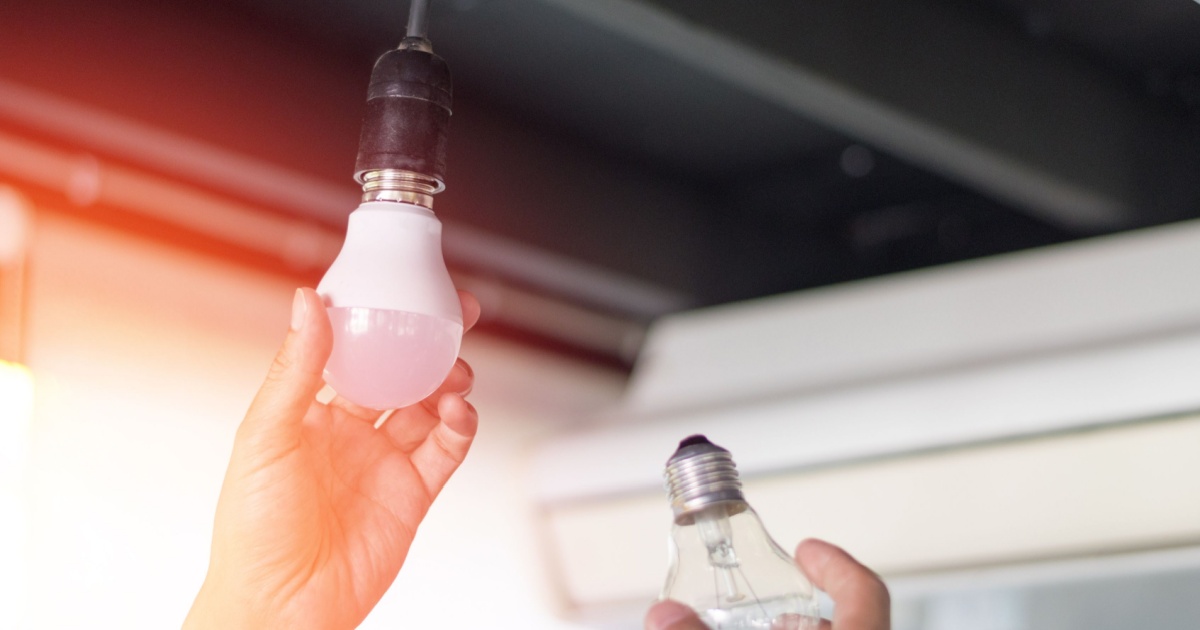This article was originally published May 26, 2019
The French Agency for Food, Environmental and Occupational Health and Safety (ANSES) recently published a 400-page report regarding the danger of LED lights to our eyes [1]. The report claims that LED lights can lead to a condition called macular degeneration that causes blindness.
ANSES calls for, among other things, officials to revise the maximum limit for exposure to LED lights (which is currently no more than 167 minutes a day or no more than 10mW), which emit more blue light than other types of lighting [2].
LED lighting outlasts regular lighting and is up to 90 percent more efficient than incandescent light bulbs [3]. LED lighting is cheaper and has taken over half of the lighting market, and industry officials say it’ll continue to rise to include an estimated 60 percent of the market by the end of 2020 [4].
Here’s what we know about blue light and its effect on our health and wellbeing.
Previous Research Acknowledges the Damaging Effects of Blue Light on Our Eyes
Research has acknowledged that exposure to blue light can cause photoreceptor damage (photoreceptors are cells in the eye that respond to light) in human eyes which can ultimately lead to vision loss [5].
Blue light can cause phototoxicity, a condition in which cells in the eyes or the skin become damaged and therefore more sensitive to light than normal [6].
The report released by ANSES says that LED lights can cause irreversible damage to retinal cells, which can lead to vision loss. Prolonged exposure to blue light causes death of eye cells which can lead to macular degeneration, an eye condition that leads to blindness for people older than age 50.
Macular degeneration is the leading cause of vision loss in the United States, affecting more than 10 million Americans, which is more than cataracts and glaucoma combined [7].
LED lights are used in homes, street lighting, and workplaces, including industrial environments. LEDs are also present in car headlights and even some toys. The whiter the lights, the higher concentration of blue light is in the spectrum.
What About the Use of Smartphones and Other Electronic Devices?
We already know that blue light in laptops, smartphones and tablets, particularly when used in a dark room, can disturb sleep and inhibit the production of melatonin [8].
While the report says these devices pose a lower risk for eye damage, the authors did distinguish between acute exposure and chronic exposure to LED lights.
While chronic exposure to low-intensity LED lights is less dangerous, it can cause aging of the retinal tissue and poor vision over time just as acute exposure to high-intensity LED lights can.
Blue Light Exposure Doesn’t Just Affect Your Vision
LED lights have more of an effect on your body than many of us think. Disrupting the production of melatonin can worsen health conditions including diabetes, heart disease, and even some forms of cancer, the report notes.
Cancers that are influenced by hormone disruptions—including breast and prostate cancer—may be influenced by blue light, blue light can disturb hormones that lead to proper sleep. The fact that exposure to light at night can have a negative impact on hormones is suspected to be the reason why people who work night shifts have a higher risk of cancer [9].
Blue light can also penetrate the skin and affect its integrity, potentially leading to premature aging of the skin and wrinkles [10]. The report from ANSES also claims that some LED lights have a stroboscopic effect caused by changes in electrical currents, which can lead to headaches and a higher risk of accidents.
The ANSES report says that even limited exposure to blue light at night can disturb the circadian rhythm and impact sleep.
LED lights also affect our environment, and ANSES recommends strengthening regulations in regards to light pollution to ensure the safety of people and animals, as evidence “consistently shows an increase in mortality and a depletion of the diversity of animal and plant species studied in night-light environments” that include LED lighting.
Who Is Most at Risk for Eye Damage from LED Lights?
Older adults and children are the most susceptible to eye damage from blue lights. In children, the lenses in their eyes are not yet fully formed, and so they are more likely to experience vision damage and sleep disruption due to blue light exposure [11].
How You Can Prevent Damage to Your Eyes, Skin, and Circadian Rhythm
It’s clear that more research is needed to understand the effect of too much blue light on our eyes, skin, and bodily health. In the meantime, however, you can take some precautions to limit your exposure to blue light and protect your eyes.
Be cautious of what lighting you choose. For your home, ANSES recommends buying what are called “warm white” LED lights as opposed to lights that have a bluish hue. Warm white LED lights are indistinguishable from normal lights and have a color temperature below 3000K.
Limit your exposure to blue light. The report also recommends limiting your exposure to LEDs that have a high concentration of blue light, and, of course, avoiding LED screens before bedtime.
Use software on your devices to help reduce your blue light exposure. Personally, I’ve been using f.lux for years for my laptop and am not sure how I ever lived without it [12]. The software filters blue light and is designed to adjust lighting conditions on your devices according to your circadian rhythm. It’s honestly been a huge help and has changed my life!
Watch out for headlights. The report also urged manufacturers to limit the intensity of vehicle headlights, some of which they claim are too bright (you know which vehicles we’re talking about!)
Be wary of blue-light filtering products. And finally, ANSES doubted the integrity of blue light filters and sunglasses because their effectiveness hasn’t been proven—which simply shows that we should use caution when making blue light a part of our everyday lives instead of merely relying on filters to take care of it for us.
Eat your colorful vegetables. Foods containing carotenoids such as zeaxanthin, lutein, and astaxanthin have the potential to protect our eyes and skin from blue light [13]. These foods include yellow, orange, and red pigments. Good foods to focus on include kale, broccoli, spinach, carrots, peppers, tomatoes, and orange-yellow foods such as sweet potatoes and acorn squash or butternut squash. For red pigments, choose wild-caught salmon, shrimp, and algae.
Do you ever find that you’re bothered by blue light, or has your sleeping been affected by exposure to LED lights? According to ANSES, more caution needs to be exercised when it comes to blue lights—and until more research is conducted, we might be wise to heed their advice!
Sources
- https://www.anses.fr/en/node/139064
- https://ap.lbl.gov/ehs/safety/nir/assets/docs/Blue%20Light%20Hazard%20Safety%20Tips.pdf
- https://www.energystar.gov/products/lighting_fans/light_bulbs/learn_about_led_bulbs
- https://science.slashdot.org/story/19/05/15/1947255/led-light-can-damage-eyes-health-authority-warns
- https://www.ncbi.nlm.nih.gov/pmc/articles/PMC4734149/
- https://www.ncbi.nlm.nih.gov/pubmed/30496813
- https://www.macular.org/what-macular-degeneration
- https://www.health.harvard.edu/staying-healthy/blue-light-has-a-dark-side
- https://www.ncbi.nlm.nih.gov/pubmed/21870422
- https://www.ncbi.nlm.nih.gov/pmc/articles/PMC6280109/
- https://www.preventblindness.org/blue-light-and-your-eyes
- https://www.thegreenwritingdesk.com/heres-dont-know-ever-lived-without-f-lux/
- https://www.mdpi.com/2304-8158/6/7/47
- https://www.anses.fr/en/node/139064
- https://www.dailymail.co.uk/health/article-7032303/LED-lights-irreversibly-damage-eyes-French-health-authority-warns.html

